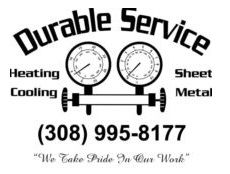
A furnace is often a background player for your home, helping keep you warm in the cold winter months. It often doesn’t get noticed until something goes wrong.
One cause could be that your furnace has a cracked heat exchanger. It can potentially be hazardous, so it’s important to familiarize yourself with the evidence of a cracked heat exchanger and what you can do if you are worried that is the problem.
What Is a Heat Exchanger in a Furnace?
A heat exchanger helps transition heat from the combustion chamber inside your furnace to the air that circulates throughout the ventilation. It typically accomplishes this through coils or tubes that heat up the air while acting as a barrier to keep byproducts produced in the combustion chamber, called flue gasses, from getting out into your home.
Is a Cracked Heat Exchanger Dangerous?
Thanks to its central role, it’s no surprise that a broken heat exchanger can be very dangerous. Cracks in the heat exchanger can allow dangerous gasses – such as carbon monoxide, which can be lethal – to flow across your home.
For that reason, never run your heating if you suspect it has a cracked heat exchanger, as this could make the entire family sick. Contact an HVAC professional as soon as possible if you are worried your heater has a cracked heat exchanger that needs repair.
Four Warning Signs of a Cracked Heat Exchanger:
- Furnace shuts off: A crack in your heat exchanger could cause your furnace to switch off.
- Unusual Smells: If the air escaping your furnace has a powerful chemical scent, it could be evidence gasses are seeping through cracks in your heat exchanger. These gasses, which will often smell like formaldehyde, are a common warning sign.
- Carbon monoxide alarm goes off or you notice health problems: If a cracked heat exchanger is emitting carbon monoxide inside your home, your carbon monoxide alarm should go off or household members may experience signs of carbon monoxide poisoning. Complications include headaches, dizziness, weakness, nausea, vomiting or feeling tired. If the alarm goes off or you feel sick, get out of the home right away and then call for help.
- Soot: If you notice black sooty accumulating on the exterior of your furnace, it’s more evidence something might be seriously wrong.
What You Can Do if the Furnace Heat Exchanger is Cracked
If you worry your furnace has a cracked heat exchanger, contact a pro well versed in furnace installation Holdrege as soon as possible so they can take a look at your system and, if required, perform a furnace heat exchanger replacement. Costs often vary depending on the situation, but estimates often hover around $1,000 to $3,000.
Estimates aside, the good news is that heat exchangers are often included in the warranty. It's a good idea to check the warranty paperwork on your furnace, since while the warranty won't always cover the entire cost of repairs, it still may significantly reduce your bill.
How to Prevent a Cracked Heat Exchanger in Your Home
One of the most convenient ways to avoid problems in your furnace overall is through routine furnace maintenance. Furnaces offer the most benefits when they run efficiently. Hiring a certified professional to check your furnace for broken-down parts, dirty filters and other common problems can keep you from getting a big bill later on.
It’s also helpful to review your furnace filters every few months – it’s encouraged some filters be swapped out every 90 days or sooner if they are dirty or grimy. While the filters are not part of the heat exchanger itself, the strain of dragging air through a clogged filter makes the entire furnace work more vigorously to do its job. And the harder your furnace has to work, the more deterioration parts like the heat exchanger will endure.

